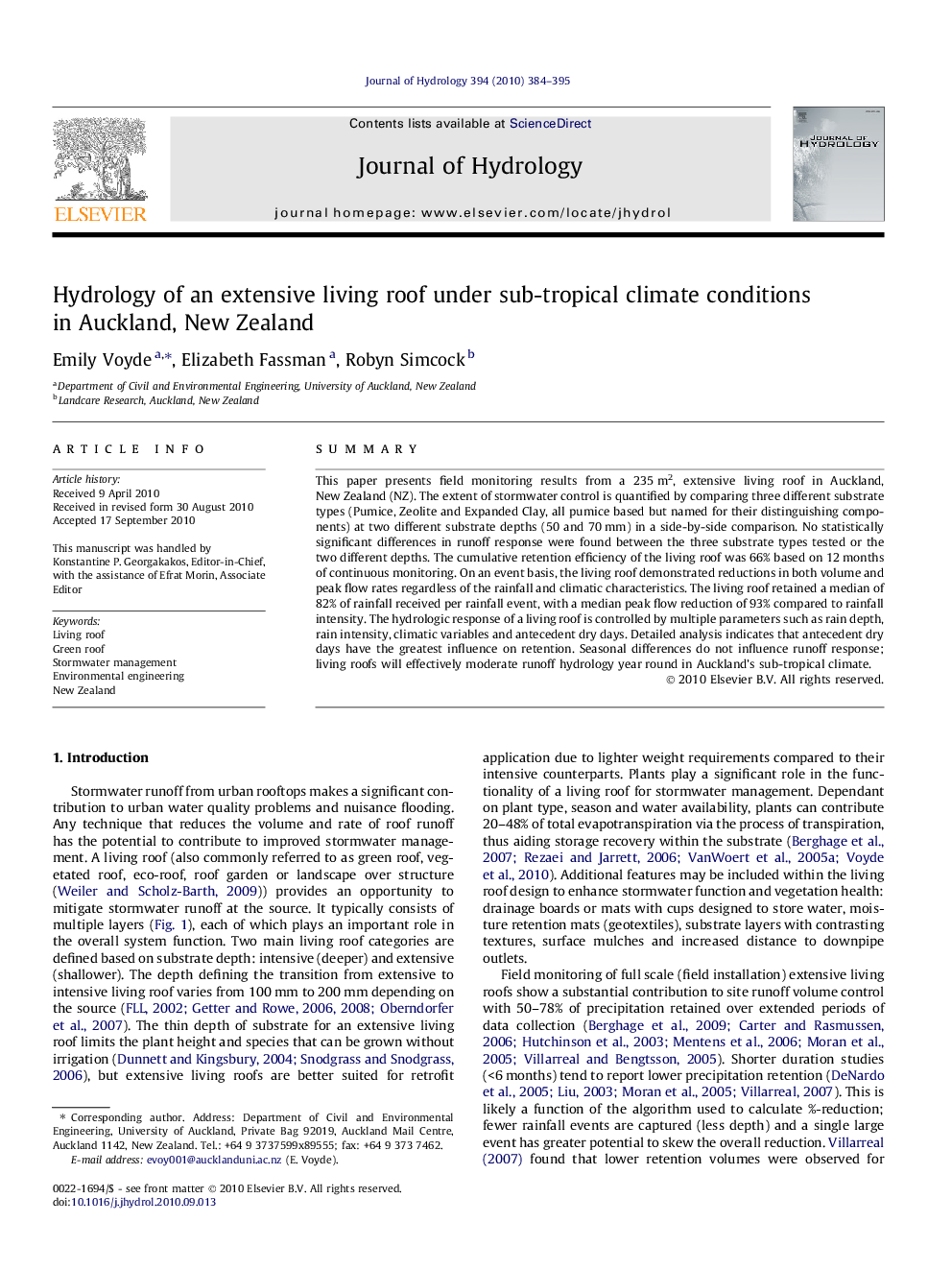| Article ID | Journal | Published Year | Pages | File Type |
|---|---|---|---|---|
| 4578051 | Journal of Hydrology | 2010 | 12 Pages |
SummaryThis paper presents field monitoring results from a 235 m2, extensive living roof in Auckland, New Zealand (NZ). The extent of stormwater control is quantified by comparing three different substrate types (Pumice, Zeolite and Expanded Clay, all pumice based but named for their distinguishing components) at two different substrate depths (50 and 70 mm) in a side-by-side comparison. No statistically significant differences in runoff response were found between the three substrate types tested or the two different depths. The cumulative retention efficiency of the living roof was 66% based on 12 months of continuous monitoring. On an event basis, the living roof demonstrated reductions in both volume and peak flow rates regardless of the rainfall and climatic characteristics. The living roof retained a median of 82% of rainfall received per rainfall event, with a median peak flow reduction of 93% compared to rainfall intensity. The hydrologic response of a living roof is controlled by multiple parameters such as rain depth, rain intensity, climatic variables and antecedent dry days. Detailed analysis indicates that antecedent dry days have the greatest influence on retention. Seasonal differences do not influence runoff response; living roofs will effectively moderate runoff hydrology year round in Auckland’s sub-tropical climate.
Research highlights► Living roofs consistently reduce runoff volumes and peak flow rates. ► Hydrologic response of a living roof is controlled by multiple parameters. ► Antecedent dry days have the greatest influence on water retention. ► Runoff response is not influenced by season in Auckland, New Zealand.
